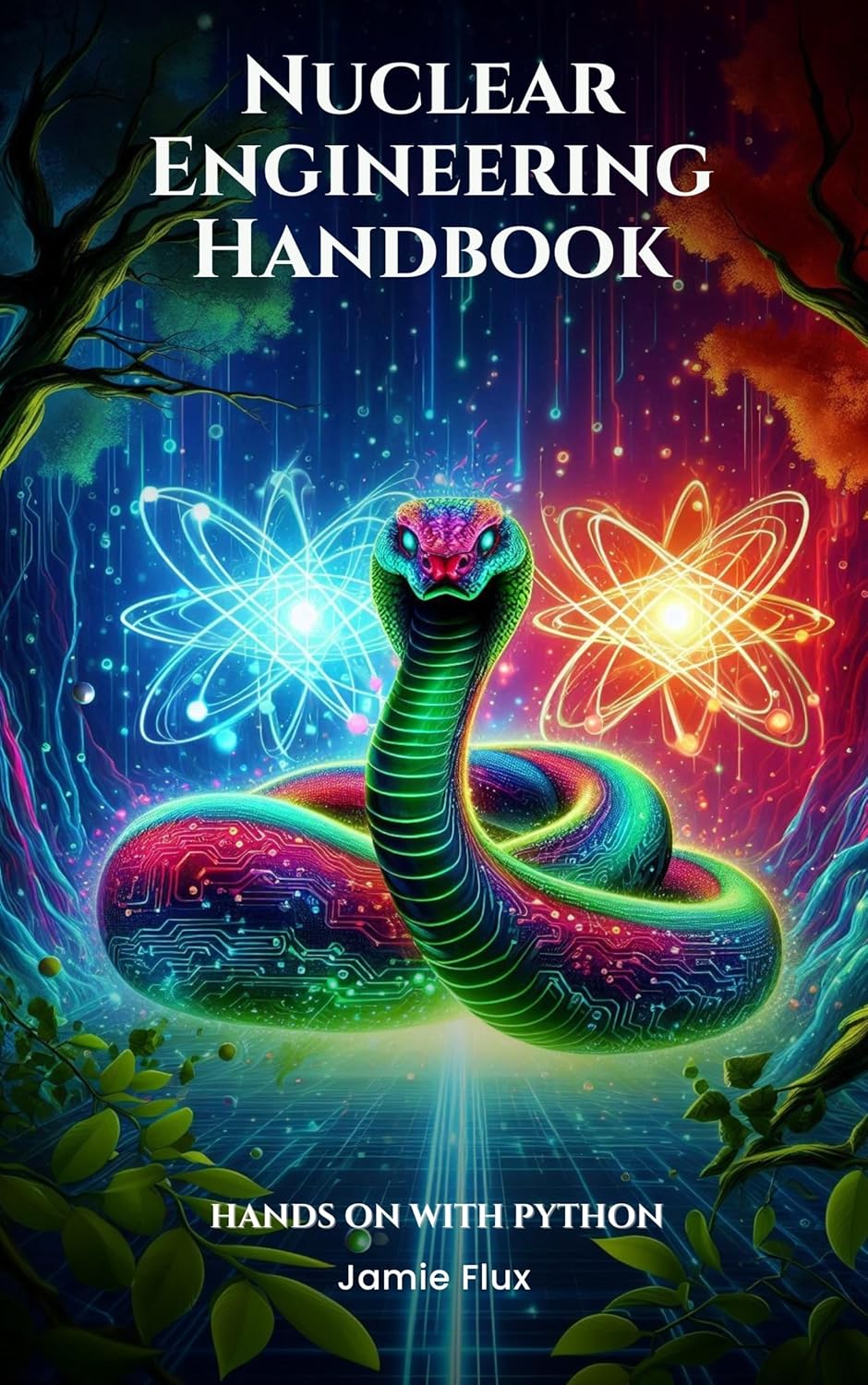English | October 17, 2024 | ASIN: B0DK9P9ZXN | 411 pages | PDF | 1.47 Mb
Nuclear Engineering Handbook: Hands on with Python! Unlock the world of nuclear engineering with this comprehensive guide that fuses theoretical knowledge with practical Python implementations.
Delve into the essential equations and models that underpin the nuclear industry, and discover how to apply them effectively with step-by-step coding examples. Whether you’re a student, a professional engineer, or an enthusiast, this book offers a treasure trove of insights to advance your understanding and capabilities in the nuclear field.
What You Will Learn
• Deepen your understanding of Fick’s Law and its applications in nuclear materials.
• Master Fourier’s principles for effective heat transfer in nuclear systems.
• Analyze neutron behavior and distribution with the Neutron Transport Equation.
• Grasp the intricacies of reactor power changes via the Point Kinetics Model.
• Harness the power of the Neutron Diffusion Equation for reactor core analysis.
• Explore reactivity variances through detailed Coefficient Equations.
• Utilize the Bateman Equations for isotope decay chain calculations.
• Investigate reactor dynamics with the Inhour Equation.
• Understand Doppler Broadening effects in neutron cross-sections.
• Calculate the delayed neutron fraction crucial for reactor control.
• Solve Eigenvalue problems for assessing reactor criticality.
• Break down the Six-Factor Formula to analyze reactor multiplication.
• Conduct thorough Burnup Calculations for fuel management.
• Implement Monte Carlo Simulation for neutron transport analysis.
• Navigate Turbulent Flow Equations for fluid dynamics in reactors.
• Evaluate Boron Dilution Models in PWR systems.
• Apply the Navier-Stokes Equations in nuclear coolant dynamics.
• Calculate heat generation within reactor fuel efficiently.
• Explore neutron scattering angles for comprehensive analyses.
• Measure Diffusion Length and Mean Free Path for neutron behavior insights.
• Discern the Two-Group Model for flux and reaction rate calculations.
• Deploy economic modeling for Fuel Cycle Economics.
• Perform Lattice Physics Calculations for fuel assembly analysis.
• Assess Pressurized Thermal Shock impacts on reactor vessels.
• Forecast Decay Heat Generation post-shutdown.
• Model Gamma Ray Attenuation for material shielding.
• Design effective Radiation Shielding with accurate calculations.
• Determine neutron Subcritical Multiplication in reactors.
• Interpret Cross-Section Data for precise nuclear analyses.
• Quantify Material Irradiation Damage in high-flux environments.
• Dive into Gas-Cooled Reactor Dynamics for unique thermal-neutron interplay.







